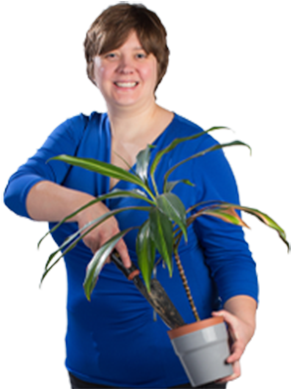This week’s Throwback Thursday comes from my first week volunteering on what ended up being five weeks of fieldwork on the NERC funded BESS project on earthworms in pasture. It was cold, wet and muddy week in Yorkshire, I ruined a camera and a pair of waterproof trousers, but I did get to visit the ecologically famous Spurn Head and gained more experience in fieldwork.
Earthworm bothering in Yorkshire
One of the benefits of my MSc at the Natural History Museum was the opportunity to volunteer on fieldwork for Museum projects, such as my previous post on my trip to Scotland with the Museum Dipterists. This week I was in East Riding, Yorkshire, helping with fieldwork for the Soil Biodiversity Group on a big NERC funded project on the distribution patterns of UK earthworms in pasture and the environmental factors behind their biodiversity. This work is needed because of the lack of information on how earthworms are affected by management and climate – given their importance in ecosystem functioning this needs to be addressed. In addition to the benefits of gaining more experience in soil science fieldwork this was a much appreciated change from sitting at home looking for and applying for jobs/PhDs and to have contact with fellow scientists, which had been lacking since completing my Master’s.
Since I was passing the Museum anyway, I dropped in to help Dr David Jones, who is leading the fieldwork, to prepare and transport the equipment needed and then it was off to Kings Cross Station to meet fellow volunteers Georgie and Veronika. Our destination was Hull and then onwards to the village of Patrington, were we checked into the beautiful Dunedin Hotel – it even had a dinner gong!
 |
 |
On Monday we set off for our first sampling session at the survey site – Hodgson’s Fields in Skeffling, but unfortunately the rain became very heavy and we only managed six samples. Although rather wet the group took the opportunity to visit Spurn Head, a long finger of sand (spit) stretching across the mouth of the River Humber and an important nature reserve. Myself and David braved the rain to walk a little way along the spit and see where the sea had recently breached the road.
 |
|
Mudflats at Spurn Head inundated by sand |
This was a trip down memory lane to my Geography A Level were quite a lot of the syllabus was on spit formation and coastal erosion. Despite being wet through and starting to feel cold I was a bit overenthusiastic and had to be retrieved by David so we could all go back to Dunedin and dry off.
Frustratingly Tuesday was more of the same but we were joined by another volunteer, Fez, which sped up the work. Sampling earthworms in grassland is a little different from the sampling I did for my MSc project. After marking out the samples using random coordinates, location and environmental measures are taken before a pit of a set size is dug from the ground. This soil is weighed and then comes the best bit – finding the earthworms!
 |
Two methods are used to sample earthworms, which reflects the different habits (or ecoytpes) of the various species. Anecic earthworms make permanent vertical burrows deep in the soil, emerging at night to feed on leaves which they pull down into their burrows. This type of worm are forced from the soil using an irritating chemical called an expellant, we used mustard powder dissolved in water. While the pit is watched carefully for any worms that emerge a team work through the clod of soil for smaller worms which live amongst the roots, called endogeic worms. Finding these requires pulling apart the roots of the grass as they often live in-between, which was hard work when the grass was dense.
 |
|
Veronika (left) and myself searching for earthworms while watching the mustard pit (thanks to Georgie for photograph). |
|
David with a large Lumbricus earthworm from the mustard pit (thanks to Fez for the photograph) |
While the earthworms are being collected and preserved in ethanol for identification back at the museum David takes a soil core which will be analysed by a team in York to measure dry weight, soil moisture and nutrient content. This involves a hamming a metal ring like a cookie cutter into the soil, often accompanied by swearing. The ring cuts a core of a set volume so each sample can be compared. Another soil sample is taken from the sorted soil which will be analysed to determine how much microbe activity there is in the sample.
Rain finally stopped play again at midday and with only one field complete out of three progress was becoming a concern but we cheered ourselves up after drying off with a lovely lunch at the excellent Sally Brown’s Tea Room in Patrington.
To great relief the weather on Wednesday was much improved so we packed lunch for a full day in the field. Field two was large and tussocky, which made it hard work to travel across, especially with heavy bags full of bottles of mustard solution and soil samples. We worked under the watchful eye of sheep.
|
Entering field number two |
With field two complete it was on to the next, with the weather being much more fieldwork friendly. However this field was grazed by a herd of English Longhorn cattle, and although we had been informed they were docile, they are a large and intimidating breed. Eventually we got the hang of how to move them by shouting and walking towards them to move them out of the way so we could continue working, but it had lost us some time.
 |
|
I particularly like the cow second on the left which had one horn growing upwards and the other growing downwards! |
Thankfully we had excellent weather for our final day and managed to herd the cattle and confine them to a another field so it was completed. With still another field to sample another team may have to come back but for us it was off to catch the train back to London after posting the soil samples to the York laboratory.
Despite getting wet through twice in as many days I had a fantastic time and feel energised by the fieldwork and interaction with others after feeling rather isolated since my MSc finished. It was also a good opportunity to speak to others at different stages in science careers to gain tips on job applications, useful organisations, contacts and generally ‘talk science’. As a result of a conversation on the trip I am attending the British Ecological Society Mastering Ecology Symposium to present my MSc work, something I which I have not had the confidence to do before.
For more information on earthworms visit the Earthworm Society of Britain. I will be back for more earthworm bothering next month in a different county!
I look back on the NERC BESS Earthworm project with great fondness, despite being the hardest fieldwork I have ever done (or since in fact). For the first time in my life I had actually enjoyed working with other people, and it really solidified my ambitions to continue a career in science – not to mention providing me with a reference for future employment and PhD applications! I do regret not ordering the knickerbocker glory at Sally Brown’s Tea Room though, how often do you see those on the menu these days!








